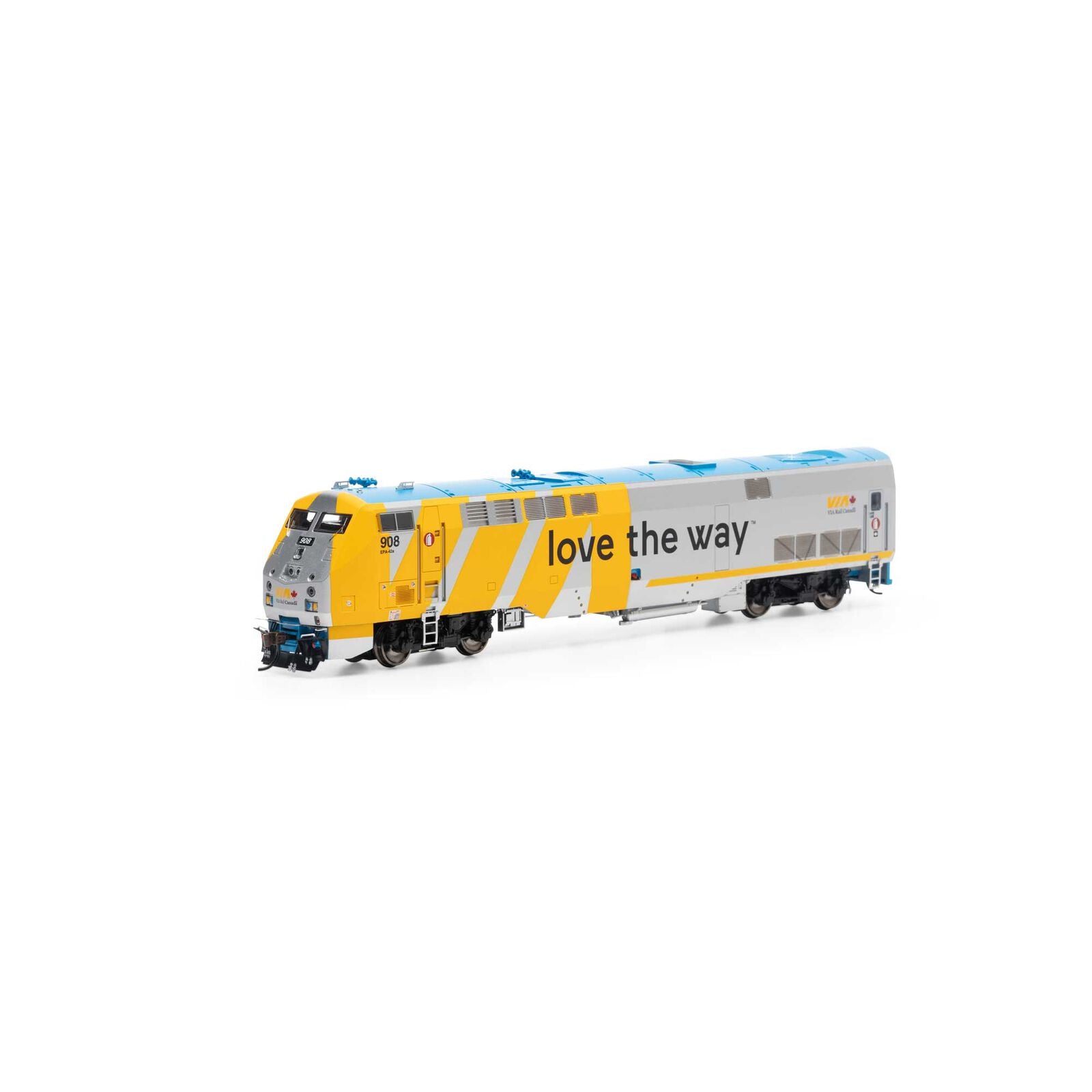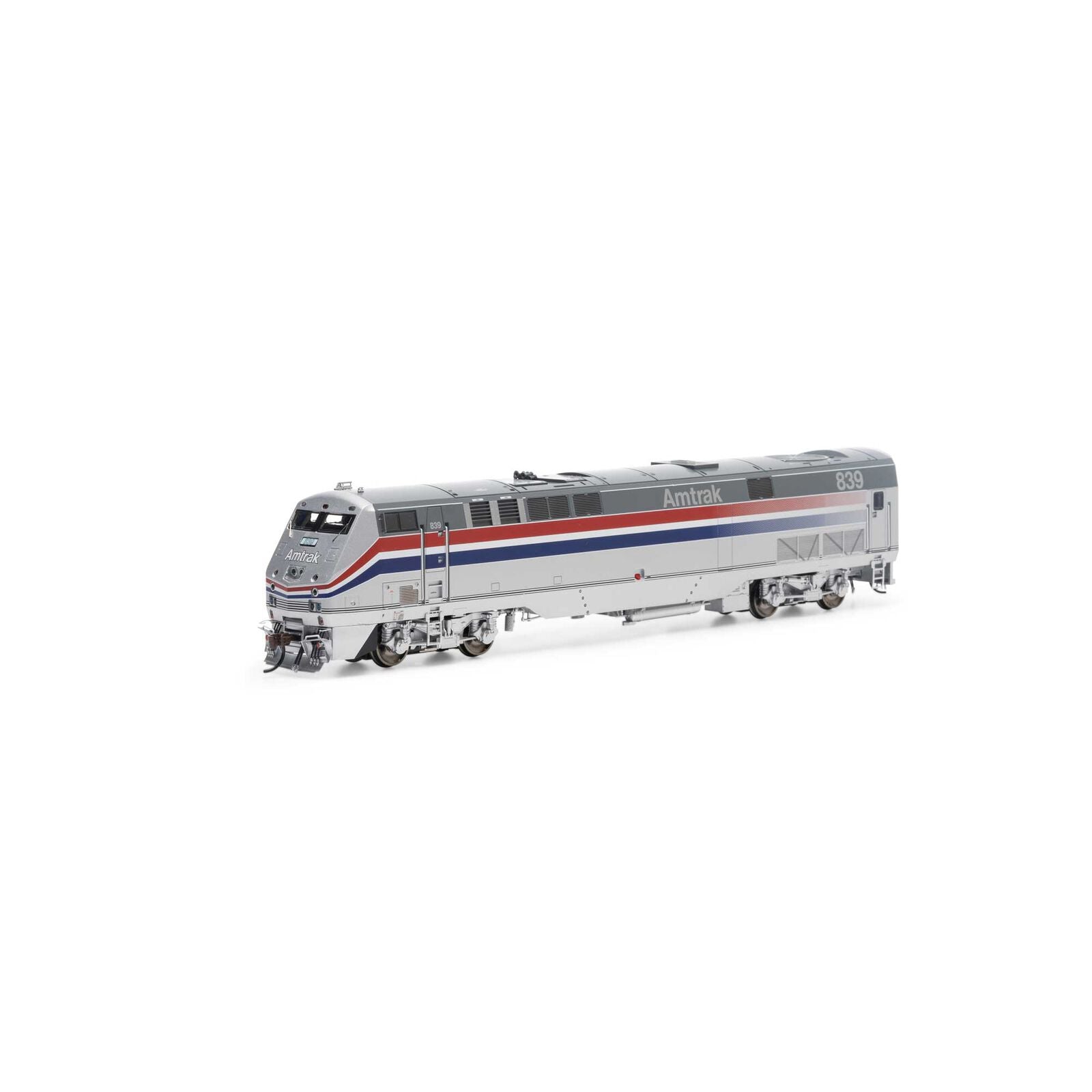Description
DCC AND SOUND EQUIPPED
After World War II, GE began work on a locomotive using a gas turbine power plant specifically designed for locomotive usage. The gas turbine had an advantage in that it could burn Bunker “C” fuel oil. Bunker “C” is a thick, low-grade oil that is a left-over when crude oil is refined into higher quality products like gasoline and diesel fuel. Being a residual of the refining process, it was both very cheap and widely available. GE’s locomotive gas turbine was about 20 feet long and created 4,500 horsepower, three times as much as a contemporary diesel. After World War II, GE began work on a locomotive using a gas turbine power plant specifically designed for locomotive usage. The gas turbine had an advantage in that it could burn Bunker “C” fuel oil. Bunker “C” is a thick, low-grade oil that is a left-over when crude oil is refined into higher quality products like gasoline and diesel fuel. Being a residual of the refining process, it was both very cheap and widely available. GE’s locomotive gas turbine was about 20 feet long and created 4,500 horsepower, three times as much as a contemporary diesel.
GE’s test-bed and demonstrator gas turbine locomotive was completed in November 1948. Numbered as UP 50, it spent twenty-one months testing on the UP, covering 105,732 miles of operation and moving 349 million gross ton-miles of freight. UP’s first gas-turbine, numbered 51, was received at the Omaha shops on January 28, 1952. It had a full car body and a single cab. It carried 7,200 gallons of fuel oil and 1,000 gallons of diesel fuel. In addition to the gas turbine, there was also a 250 horsepower diesel engine. The diesel was used to move the locomotive around yards, power the auxiliaries, and crank the turbine. The locomotive weighed 551,720 pounds and was just over 83 feet long and stood 15 feet six inches tall. It rode on two sets of span-bolster AAR Type B trucks with a wheel arraignment of B+B-B+B. The gear ratio was 74:18 that gave a maximum speed of 65 miles per hour and a starting tractive effort of 137,930 pounds. Like contemporary diesels, the gas turbines were equipped with dynamic brakes. GE’s test-bed and demonstrator gas turbine locomotive was completed in November 1948. Numbered as UP 50, it spent twenty-one months testing on the UP, covering 105,732 miles of operation and moving 349 million gross ton-miles of freight. UP’s first gas-turbine, numbered 51, was received at the Omaha shops on January 28, 1952. It had a full car body and a single cab. It carried 7,200 gallons of fuel oil and 1,000 gallons of diesel fuel. In addition to the gas turbine, there was also a 250 horsepower diesel engine. The diesel was used to move the locomotive around yards, power the auxiliaries, and crank the turbine. The locomotive weighed 551,720 pounds and was just over 83 feet long and stood 15 feet six inches tall. It rode on two sets of span-bolster AAR Type B trucks with a wheel arraignment of B+B-B+B. The gear ratio was 74:18 that gave a maximum speed of 65 miles per hour and a starting tractive effort of 137,930 pounds. Like contemporary diesels, the gas turbines were equipped with dynamic brakes.
UP FEATURES: UP FEATURES:
Sectional Grilles Sectional Grilles
24,000 gallon tender 24,000 gallon tender
Raise air intake Raise air intake
Short nose door and handrails Short nose door and handrails
Aluminum-painted trucks Aluminum-painted trucks
Equipped with aluminum-painted trucks, tenders, and sectional air intakes, these turbines are detailed to match their later-in-life appearance. Equipped with aluminum-painted trucks, tenders, and sectional air intakes, these turbines are detailed to match their later-in-life appearance.
GENESIS GAS TURBINE FEATURES: GENESIS GAS TURBINE FEATURES:
Fully assembled and ready for your layout or display Fully assembled and ready for your layout or display
Genesis driveline with 5-pole skew wound motor, precision machined flywheels, and multi-link drivetrain for trouble free operation Genesis driveline with 5-pole skew wound motor, precision machined flywheels, and multi-link drivetrain for trouble free operation
Sound versions feature Soundtraxx Tsunami2 sound with 2 speakers installed Sound versions feature Soundtraxx Tsunami2 sound with 2 speakers installed
DCC ready version wiring harness installed (21 pin harness) DCC ready version wiring harness installed (21 pin harness)
Razor sharp painting and printing Razor sharp painting and printing
McHenry scale knuckle spring couplers installed McHenry scale knuckle spring couplers installed
Minimum radius: 18″ – Recommended radius: 22″ Minimum radius: 18″ – Recommended radius: 22″
SOUND-EQUIPPED MODELS ALSO FEATURE: SOUND-EQUIPPED MODELS ALSO FEATURE:
Onboard DCC decoder with SoundTraxx Tsunami2 sound Onboard DCC decoder with SoundTraxx Tsunami2 sound
Four cube speakers for optimal sound quality Four cube speakers for optimal sound quality
Sound units operate in both DC and DCC Sound units operate in both DC and DCC
Full DCC functions available when operated in DCC mode Full DCC functions available when operated in DCC mode
Engine, horn, and bell sounds work in DC Engine, horn, and bell sounds work in DC
All functions NMRA compatible in DCC mode All functions NMRA compatible in DCC mode
Precision slow speed control Precision slow speed control
Program a multiple unit (MU) lashup with lead unit only horn, bell, and lights Program a multiple unit (MU) lashup with lead unit only horn, bell, and lights
Many functions can be altered via Configuration Value (CV) changes Many functions can be altered via Configuration Value (CV) changes
CV chart included in the box CV chart included in the box






Reviews
There are no reviews yet.